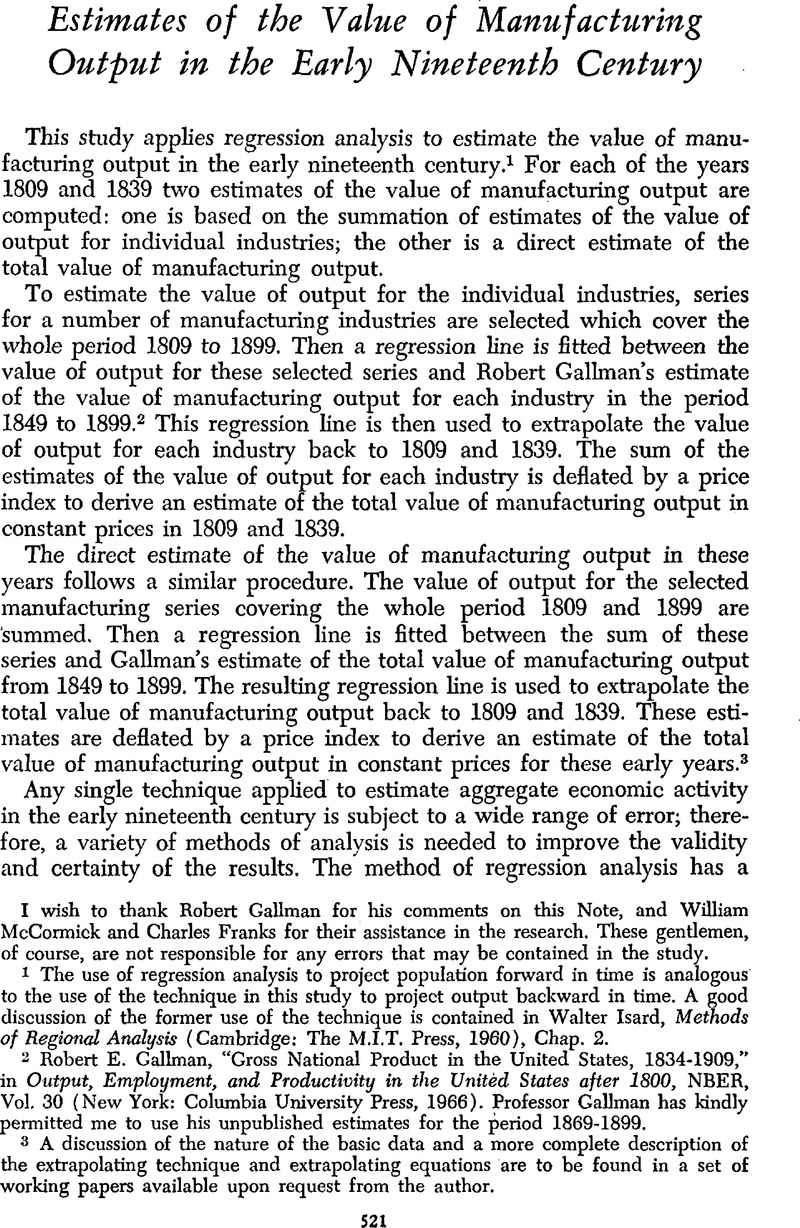No CrossRef data available.
Article contents
Estimates of the Value of Manufacturing Output in the Early Nineteenth Century
Published online by Cambridge University Press: 03 February 2011
Abstract

- Type
- Notes
- Information
- Copyright
- Copyright © The Economic History Association 1969
References
1 The use of regression analysis to project population forward in time is analogous to the use of the technique in this study to project output backward in time. A good discussion of the former use of the technique is contained in Isard, Walter, Methods of Regional Analysis (Cambridge: The M.I.T. Press, 1960), Chap. 2.Google Scholar
2 Gallman, Robert E., “Gross National Product in the United States, 1834–1909,” in Output, Employment, and Productivity in the United States after 1800, NBER, Vol. 30 (New York: Columbia University Press, 1966).Google Scholar Professor Gallman has kindly permitted me to use his unpublished estimates for the period 1869–1899.
3 A discussion of the nature of the basic data and a more complete description of the extrapolating technique and extrapolating equations are to be found in a set of working papers available upon request from the author.
4 The fact that the selected series become less representative of the total manufacturing output in the later nineteenth century suggests the use of a shorter time interval closer to the early years of the century. Tests with a shorter time interval indicate that the longer time period yields better results. The availability of more data points results in more degrees of freedom in the regression analysis, and the greater accuracy of the census in the later period improves the quality of the underlying data.
5 Fishlow, Albert, “Trends in the American Economy in the Nineteenth Century: A Review,” JOURNAL OF ECONOMIC HISTORY XXII (Mar 1962), 71–80.CrossRefGoogle Scholar
6 The wide confidence bounds for these early years are not surprising. It is hazardous to make estimates beyond the range of data for which the regression equation is fitted, and the confidence bounds become wider the further that the observed values depart from the mean of the observed values. Because of the wide range of error in these output estimates, further refinements of the data, such as value added, were not computed.
7 Gallman, Robert, “Commodity Output 1839–1899,” in Trends in the American Economy in the Nineteenth Century, NBER, Vol. 24 (Princeton: Princeton University Press, 1960).Google Scholar




